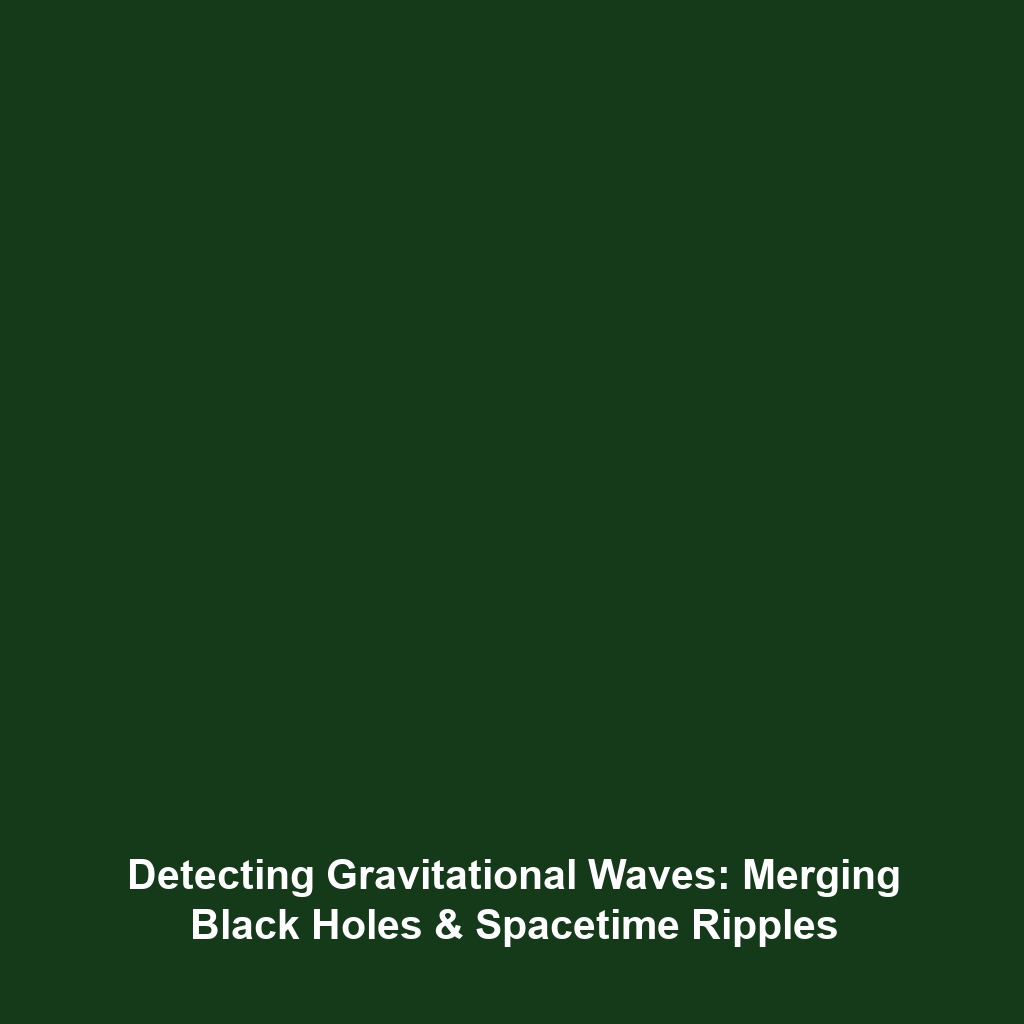Intermediate Black Holes: Rare black holes with a mass between stellar and supermassive
Introduction
Intermediate black holes are elusive celestial objects that occupy a unique position in the mass spectrum of black holes. Ranging from hundreds to thousands of solar masses, these black holes serve as a critical link between stellar black holes, typically up to 20 times the mass of our Sun, and supermassive black holes, which can exceed millions of solar masses. Understanding their existence and characteristics not only enhances our comprehension of black hole formation but also contributes to the broader narrative of cosmic evolution, making the study of intermediate black holes both fascinating and significant.
Key Concepts
1. Definition and Characteristics
Intermediate black holes (IBHs) are hypothesized to exist within the mass range of approximately 100 to 100,000 solar masses. Researchers propose that they may form through the merger of several stellar black holes or through the rapid gravitational collapse of massive star clusters.
2. Relationship with Other Black Holes
The existence of intermediate black holes bridges our understanding of black hole formation and evolution. Their study can shed light on the processes that lead to the formation of supermassive black holes found in the centers of galaxies. This adds complexity to the current models of black hole categorization and formation.
3. Detection Methods
Detecting these elusive black holes poses significant challenges. Several methods are currently employed, such as:
- Gravitational wave detection from black hole mergers
- Observations of X-ray emissions from accreting matter
- Radio wave emission surveys looking for evidence of intermediate black holes in globular clusters
Applications and Real-World Uses
The study of intermediate black holes holds significant potential for various applications within the broader context of black holes. Some key areas include:
- Astronomical Observations: Understanding intermediate black holes can lead to improved astronomical models and observations.
- Gravitational Wave Astronomy: Insights gained from IBH mergers contribute to our understanding of gravitational waves, enhancing detection technologies.
- Cosmology: These black holes may provide clues about structure formation in our universe and the behavior of dark matter.
Current Challenges
Despite their intriguing potential, the study of intermediate black holes is fraught with challenges, including:
- Limited Detection: Their rarity makes them difficult to detect compared to stellar and supermassive black holes.
- Theoretical Models: Lack of robust theoretical models to predict their formation pathways complicates research efforts.
- Technological Limitations: Current technology often struggles to pick up the faint signals emitted by these black holes.
Future Research and Innovations
The future of research on intermediate black holes appears promising, with potential breakthroughs on the horizon. Some anticipated innovations include:
- Development of advanced gravitational wave detectors that can identify smaller and fainter black hole mergers.
- Utilization of innovative telescopes that enhance the observation of x-ray emissions from these elusive objects.
- Increased collaboration among astronomers and physicists to develop unified models of black hole evolution.
Conclusion
In summary, intermediate black holes represent an intriguing area of study within the realm of black holes. By bridging the gap between stellar and supermassive black holes, these rare entities challenge existing theories and invite deeper exploration into the cosmos. As research progresses, it is vital for the scientific community to continue investigating these enigmatic objects. For further reading, check out our articles on Stellar Black Holes and Supermassive Black Holes.







